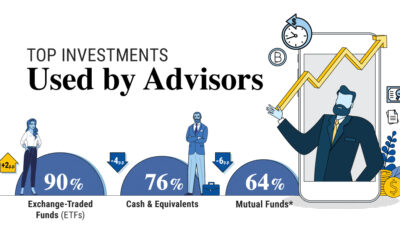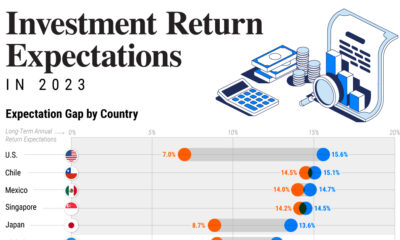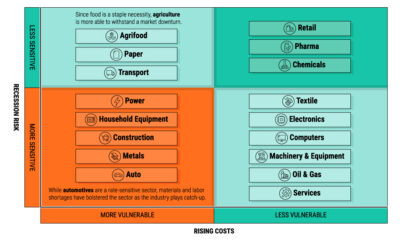This infographic is available as a poster.
Visualizing the Financial Conditions Index
What do financial conditions indicate about the economy? What effects do they have on growth?
From S&P 500 Index returns to the Cboe Volatility Index (VIX) to a range of credit conditions, the Chicago Fed’s Financial Conditions Index looks at whether financial activity is tighter than the historical average—or more accommodative.
This Markets in a Minute chart from New York Life Investments compares financial conditions in 2022 to the last 40 years as interest rates rise at the fastest rate in decades.
How Is the Financial Conditions Index Measured?
First, the Chicago Fed’s Financial Conditions Index takes 105 weighted average indicators of financial activity and organizes them into three main categories.
Together, the sum of these indicators provide an update on the state of U.S. financial markets.
| Category | Risk | Credit | Leverage |
| What Does It Measure? | - Volatility
- Funding Risk | - Credit Conditions | - Debt and Equity Markets |
| Example Indicator | Cboe Volatility Index | Mortgage spreads,
corporate bond yield spreads | S&P 500 Price Index Returns |
For example, low equity market volatility is associated with lower risk and better financial conditions.
Credit market factors, such as mortgage spreads and corporate bond yield spreads, indicate the credit conditions of the economy. Credit spreads are the difference in bond yields (returns) of two different debt securities with the same maturity, but with different credit quality.
In this way, a narrower credit spread often indicates better financial conditions, while a wider credit spread indicates worse conditions. Credit spreads apply to any debt instrument like mortgages or corporate bonds.
Asset prices, as seen in the S&P 500 Index, are part of the leverage category which measures the state of U.S. debt and equity markets. When the index is declining, it can be associated with tighter conditions.
Dove vs. Hawk
Another way to look at the state of financial conditions is through a ‘dovish’ or ‘hawkish’ lens.
When conditions are more accommodative, they can be seen as more dovish. This is when monetary policy favors lower interest rates to boost economic growth and employment.
Hawkish conditions, on the other hand, are characterized by tighter monetary policy. This is seen in higher interest rates to control inflation, but typically at the expense of economic growth, spending, and employment.
The Best of Times & the Worst of Times
When have the best and worst financial conditions taken place in recent history?
Following the recession of 1990, interest rates fell after periods of unprecedented highs in the 1980s. This eased the debt burdens for corporations and households, creating some of the most favorable financial conditions in the last several decades.
Despite the early 1990s being characterized with the most accommodative conditions, the period was marked by slow economic and employment growth.
Interestingly, it was not until the second half of the decade that growth accelerated, amid low inflation and unemployment. Broadly speaking, an increase in private-sector spending and employment helped drive this growth.
| Good Financial Conditions | Bad Financial Conditions |
| Q3 1993 | Q2 1980 |
| Q4 1990 | Q1 1980 |
| Q1 1994 | Q3 1981 |
| Q2 1993 | Q3 1982 |
| Q1 1993 | Q2 1981 |
| Q3 1992 | Q4 1980 |
| Q2 1992 | Q1 1981 |
| Q3 1992 | Q4 1982 |
| Q4 1992 | Q2 1982 |
| Q1 1996 | Q4 1981 |
| Q4 1996 | Q4 2008 |
| Q3 1994 | Q1 2009 |
By contrast, the early 1980s saw the worst financial conditions by far. Interest rates hit historic highs to rein in inflation, and financial conditions were strained.
Historically, tighter financial conditions have been linked to falling asset values and increasing risk premiums. This is the additional return an investor can expect to receive for holding a riskier asset compared to the return from a risk-free asset like a government bond.
During these conditions, economic activity can slow and the net worth of households and nonfinancial companies could decline amid tightened credit conditions.
A Closer Look: 2022 In Context
Against the backdrop of six interest rate hikes and declining equity market performance in 2022, financial markets are facing challenging conditions.
Given these factors, are conditions more hawkish or accommodative?
Compared to historical averages, financial markets still fall on the dovish side. Although conditions have slowly become less accommodative from their recent peak in mid-2021, they remain closer to neutral from a long-term perspective.
Still, corporate bond spreads, key indicators in the Financial Conditions Index, could widen if interest rates and default concerns continue to rise. Higher yields, in tandem with strain on other financial indicators like the VIX and S&P 500 returns, could tilt conditions to become more hawkish looking ahead.

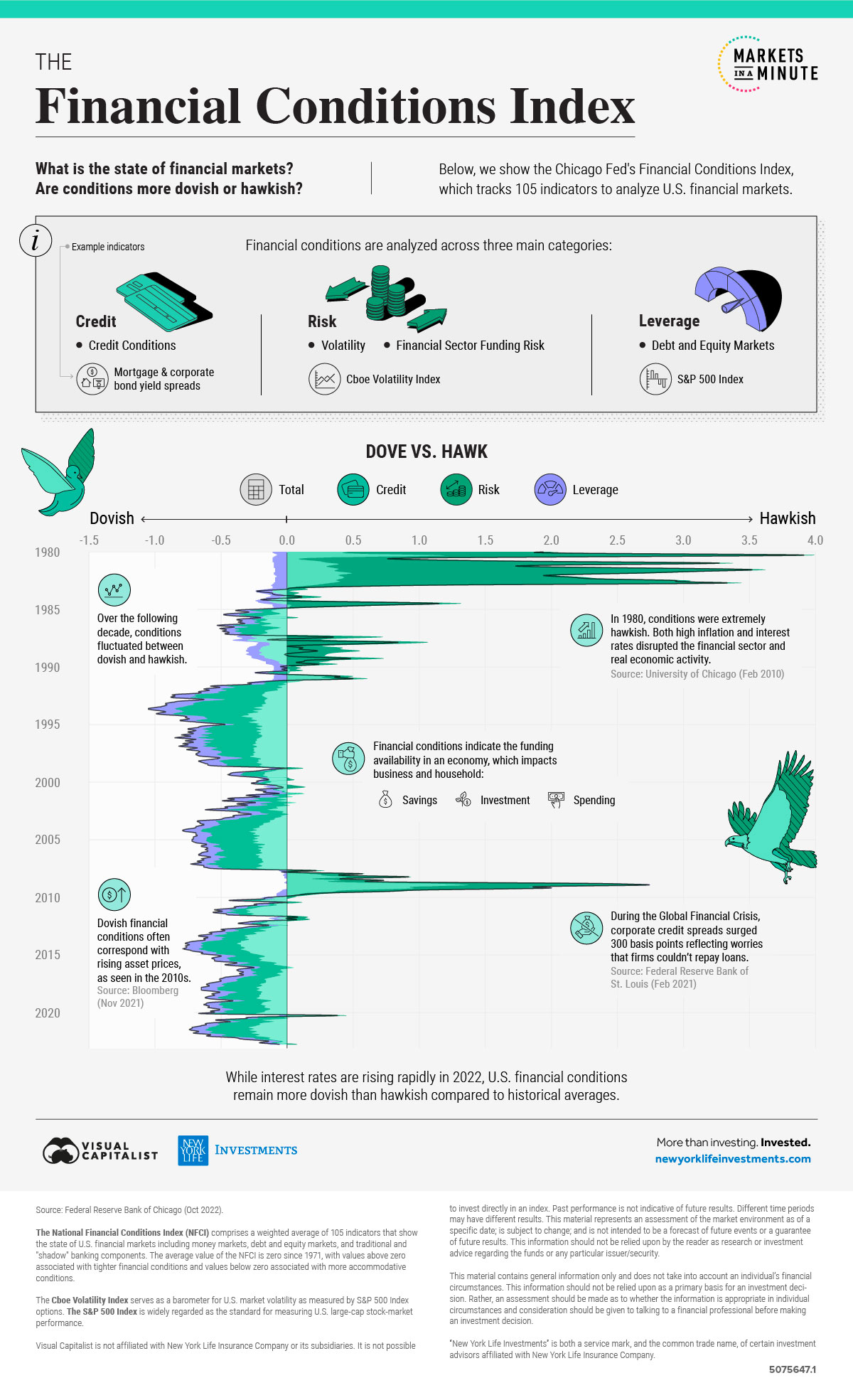
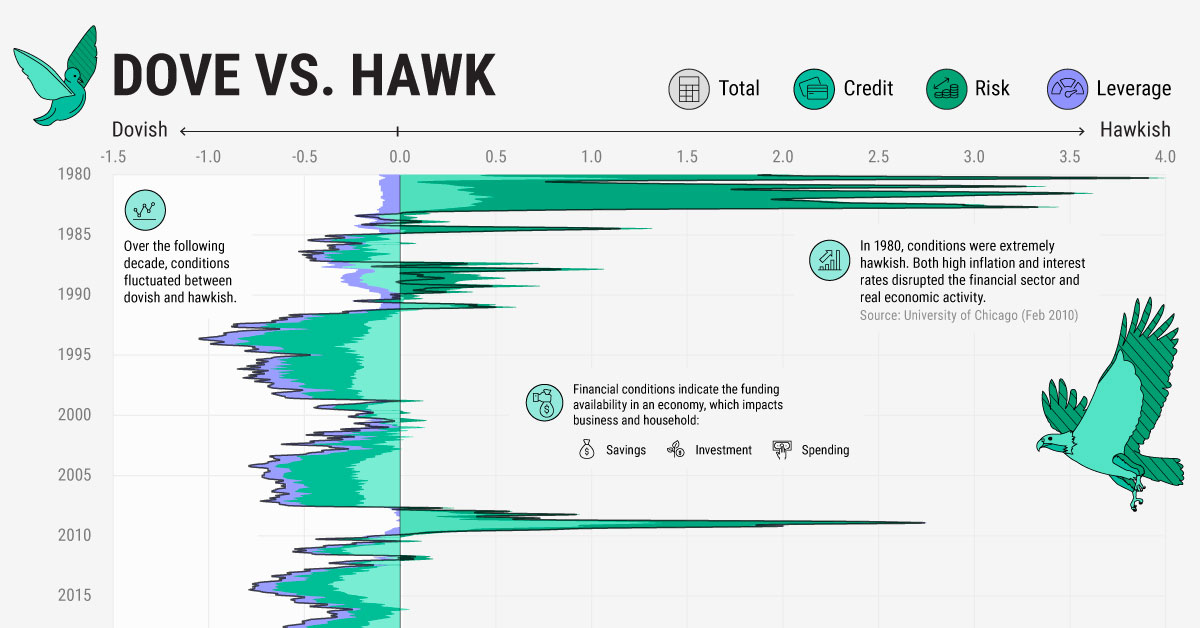

 Infographics2 years ago
Infographics2 years ago
 Markets in a Minute2 years ago
Markets in a Minute2 years ago
 Markets in a Minute2 years ago
Markets in a Minute2 years ago
 Infographics2 years ago
Infographics2 years ago
 Markets in a Minute1 year ago
Markets in a Minute1 year ago
 Markets in a Minute2 years ago
Markets in a Minute2 years ago
 Infographics1 year ago
Infographics1 year ago
 Markets in a Minute2 years ago
Markets in a Minute2 years ago





